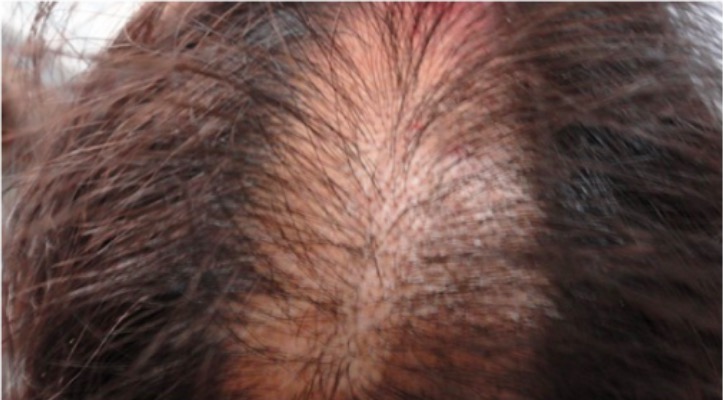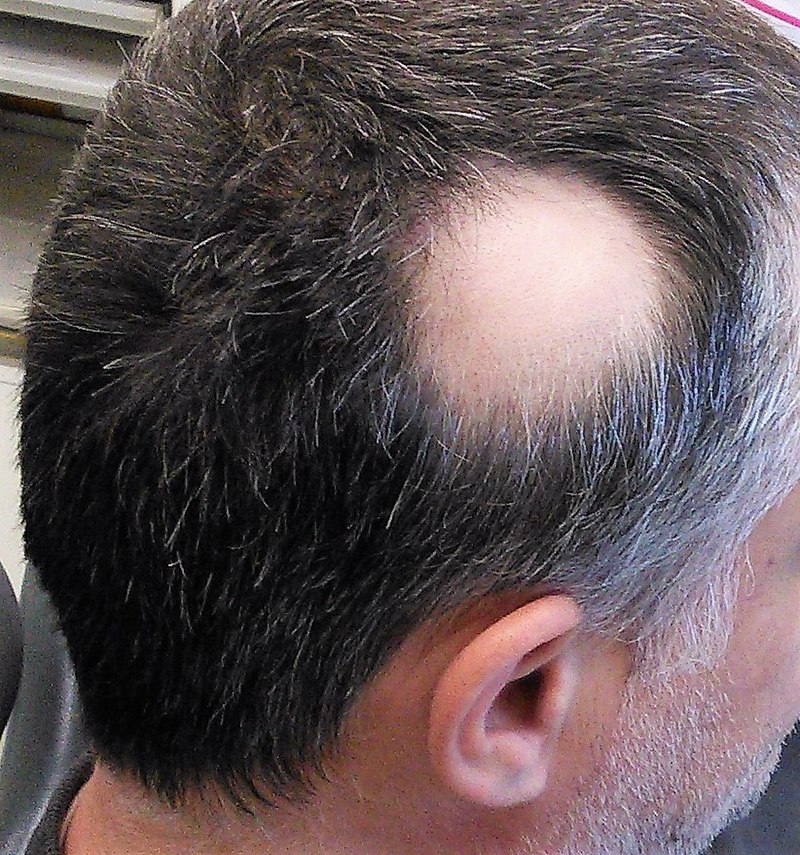Playlist
Show Playlist
Hide Playlist
Hair Loss in Children: Alopecia Areata, Nevus Sebaceus, Traction Alopecia & Trichotillomania (TTM)
-
Slides CausesofHairLoss Pediatrics.pdf
-
Download Lecture Overview
00:00 In this lecture, we're going to review some causes of Hair Loss in Children. Here's an example. 00:08 "A 5-year-old's mom notices the sudden appearance of 2 bald areas on her otherwise healthy daughter's scalp. These patches are circular in shape and about 1-1/2 inches in diameter. You can see this photo here. There is no scaling and no inflammation on the hair or the skin." What is the most likely diagnosis? Confused? This is probably alopecia. So this is alopecia areata. It's a clearly demarcated round or oval patch of hair loss on the scalp. There is no visible scaling or inflammation. It's nonpainful. There are a variety of possible etiologies but generally this is an autoimmune condition against the hair root. Etiologies can include food or stress or nervousness or hyperactive disorders. These can be associated with this problem. Most children will regrow hair within a 6 to 12-month period. More extensive hair loss is associated with a poor prognosis and the hair may initially look white but generally returns to typical color. Some patients do not regrow the hair. Here's another example. "A 2-month-old male presented to his pediatrician with an area of alopecia to his scalp. Upon physical exam, this area was pale pink plaque without any evidence of irritation or scabbing and there's no family history of alopecia. So there is something there on the scalp." What's the most likely diagnosis? In this case, this is probably a nevus sebaceous or nevus sebaceous of Jadassohn. This is a congenital hairless plaque as you can see in this picture here. It's on the face or the scalp. It's mostly a result of benign growth of excess sebaceous glands. There are no hair follicles. It's usually solitary, it's circular, linear, or irregular in shape and it's sporadic. It just happens. It's not genetically inherited necessarily. For these lesions, we just closely monitor. Surgical removal is an option and if we're going to do it, we're going to do it as early as possible to prevent any growth. There is some malignant potential so keep an eye on this and once removed they do not grow. Here's another case study. "A 7-year-old is wearing a particularly tight ponytail to school everyday for several weeks. Her mother brings her to the pediatrician concerned because her hair seems to be thinning and falling out near her forehead and her temples." What's the most likely diagnosis? So this is traction alopecia. This is a result of physical damage from tagging on the hair chronically. So it's more common in girls because they tend to do this more. It's a result of tight hairstyles especially braids or ponytails and it can be worsened by physical or chemical treatments. It causes the hair to fall out along the hairlines on the front and sides of the head. 03:18 So, for traction alopecia we want to handle the hair more gently and no more tight braiding or ponytails and eventually the hair will usually grow back in about 3 months, although if patients continue to do it there may be a problem with that. Another case study. Here, "A concerned parent notices a patchy incomplete hair loss in her 12-year-old daughter's right scalp. She also notices that some eyelashes are missing. She reports noticing that she pulls at her hair while she studies. When asked about her social history, her mom reports that the family has been going through a divorce, which has been difficult on her daughter." What is the diagnosis to address her hair loss? So this patient probably has trichotillomania. Trichotillomania is a psychiatric compulsion to pull out your own hair. It's common in children. It results from pulling, plaquing, or twisting of the hair. Patients may have irregular patches or incomplete hair loss because it's harder to pull shorter hairs. It can affect the scalp, the eyebrows, or even the eyelashes and in general there are either psychosocial issues or family issues that may be contributing to stress which may be contributing to the behavior. For patients with trichotillomania, the key thing is to address the underlying problem, the anxiety or the stress or the mental illness. Gradually, this hair will usually regrow spontaneously. So that's a review of the major causes of Hair Loss in Children. Thanks for your time.
About the Lecture
The lecture Hair Loss in Children: Alopecia Areata, Nevus Sebaceus, Traction Alopecia & Trichotillomania (TTM) by Brian Alverson, MD is from the course Pediatric Dermatology.
Included Quiz Questions
Which of the following is a key finding in patients with alopecia areata?
- No irritation in the skin
- Loss of hair over all parts of the body
- Scaly skin where hair loss occurs
- Early puberty
Which of the following is NOT true regarding alopecia areata?
- Scaling or inflammation can be seen before hair loss.
- In children with alopecia, hair re-grows with 6–12 months
- New hair initially looks white.
- Severe stress is an associated factor.
- It is oval or round patches of hair loss.
Which of the following is a feature consistent with nevus sebaceous?
- A congenital, hairless plaque on face or scalp
- Often malignant
- Contains hair follicles
- Positive family history
- More often found in adults
Customer reviews
5,0 of 5 stars
| 5 Stars |
|
1 |
| 4 Stars |
|
0 |
| 3 Stars |
|
0 |
| 2 Stars |
|
0 |
| 1 Star |
|
0 |
Excellent lecture as usual, easy to remember, good differential diagnosis.





